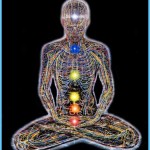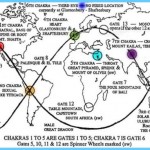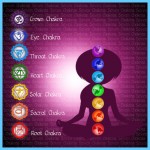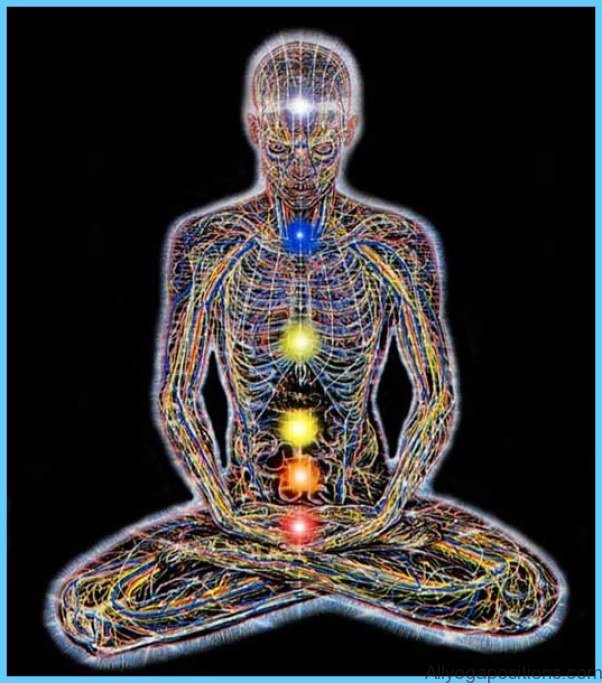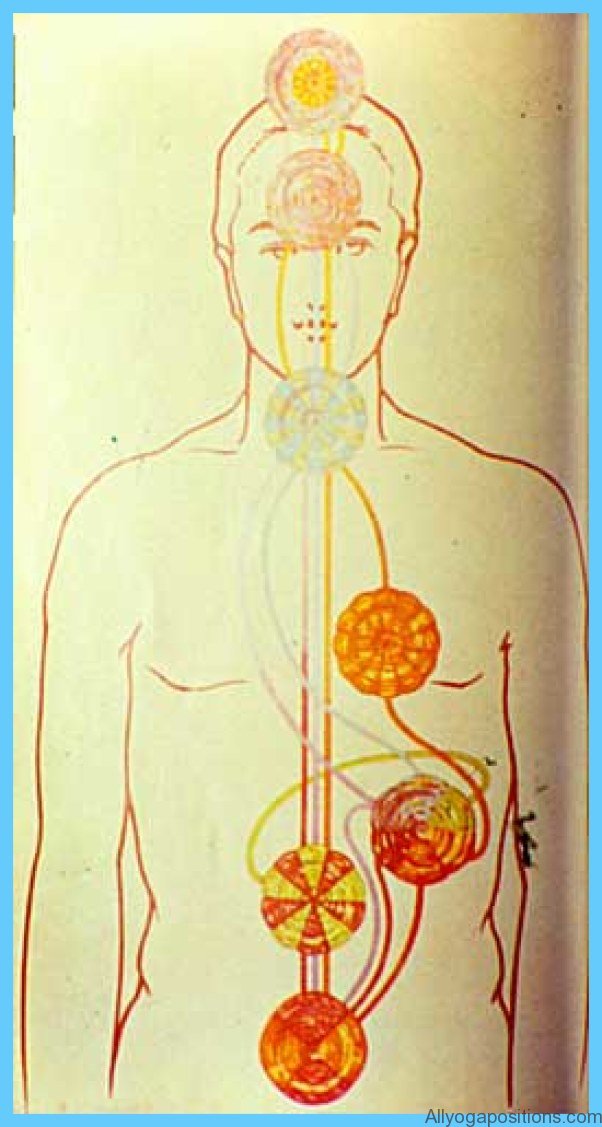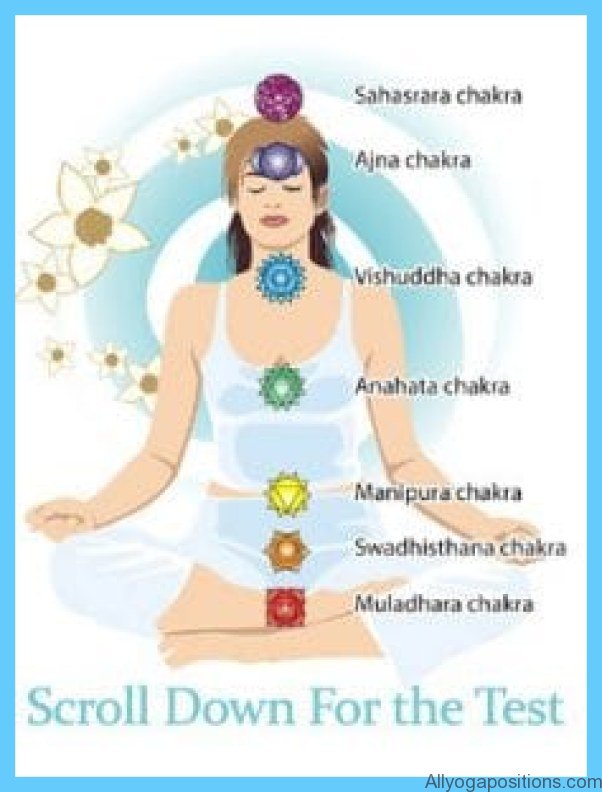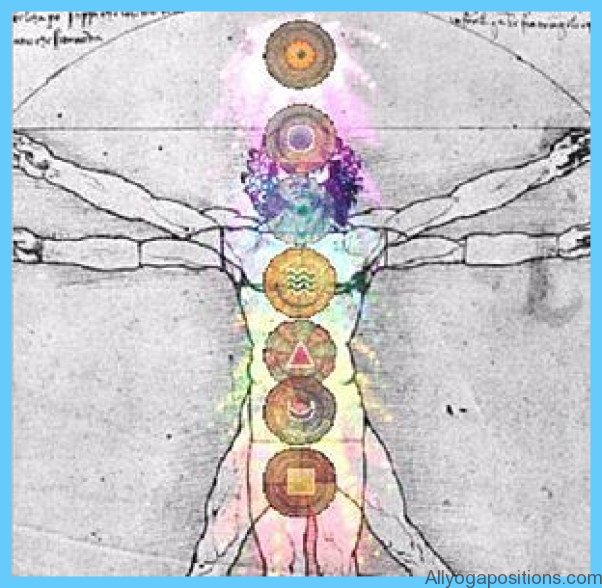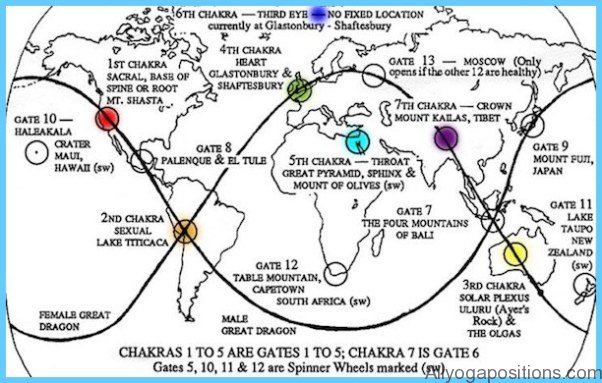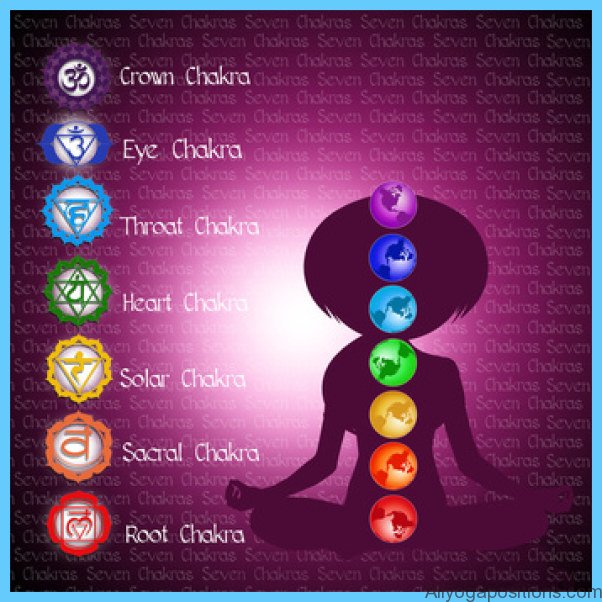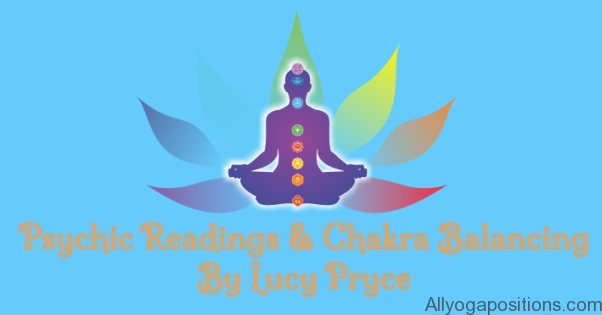What about chakras? Does purifying and strengthening them help us communicate with spiritual identities? Are chakras like telephone lines that connect us so we can speak to spiritual identities? Or are they more like doorways that open up directly into the spiritual realm?
Before answering these questions about chakras, we need to clarify the context. As a human being you have an energetic self, which includes your aura and other electromagnetic aspects of your being. When you were in the womb, the aura provided a template that generated your body shape at a cellular level. Now, as a mature human being, the aura facilitates communication between those in the spiritual realm and you living in the human realm. The chakras are another part of the interconnective electromagnetic complex that contributes to your energetic self.
Simply, chakras are energy centres, energy fulcrums if you like. They exist on the electromagnetic level but are also associated with specific areas of the body. Historically, differing systems for describing the charkras have developed in different cultures. The Chinese refer to five chakras, the Indians to seven and the Jewish Kabbalah to twelve, although in the last case this is also a metaphysical system, designed to relate the micro human to the macro cosmic. Here we will adhere to the Indian descriptive system of seven chakras. We do so not because it is more truthful, but simply on pragmatic grounds, because it is the most widely known chakra system in today’s English-speaking world.
ARE CHAKRAS MORE LIKE TELEPHONE LINES OR DOORWAYS Photo Gallery
Different traditions emphasise different chakras. For those practising martial arts, the chakra situated just below the belly button is key. Among those who practise Tantra and Taoist sex magic, the sex centre chakra is a focus. For those dedicated to prayer, the heart chakra is central. For meditators, the solar plexus, heart or forehead chakras are the focus, depending on what their practice involves.
There is no hierarchy among practices. One practice is not better than another. Any can be practised, and is practised, by those who are more experienced and able, having lived more lives and having spent more time developing their skills. Similarly, no chakra is more significant or more important than any other. Each has its functions, and each will be cultivated by you during your full incarnation cycle.
The question has been asked, do you need to cultivate your chakras in order to contact those in the spiritual domain? Yes, chakra cultivation is required. But perhaps not in the way you expect. It is useful to look at your existence from an energetic perspective. We previously discussed EBEs and observed that they exist in a range of frequencies, from the very dense to the ethereal. This range also applies to human awareness.
Most people’s awareness is focused on their immediate physical reality. That is what they pay most attention to—which is entirely appropriate, because that is what you incarnate to do. But people engage with the physical in different ways. Some live a violent life, applying physical dominance over others, while others dedicate themselves to nurturing other people. It can readily be deduced that this range of behaviours gives rise to different qualities of awareness. Those who are violently domineering possess a denser, more opaque awareness, while those who nurture others possess a comparatively more translucent awareness. The first is like a blunt hammer while the second is more like a cheesecloth, allowing interactions to flow back and forth. However, the comparison isn’t quite this straightforward, because among those who prefer to use blunt force, some are more subtle in how they apply it. Possessing insight into human psychology, they cunningly use persuasive tactics that get around their victim’s defensive mechanisms. They also employ other people to do their dirty work. Among those who nurture others, some conceive of nurture in rigid terms, putting those in their charge into an inflexible hierarchical framework. Other nurturers are much more fluid and responsive to individual needs and situations. So among nurturers, as among the violently domineering, there is a wide range of quality of engagement, from more rigid to more responsive, and a corresponding range of individual awareness, from heavier to lighter, and from being fixed to being supple.
But this still isn’t all. Further complicating this picture is that what may be termed dark storms pass through each individual human awareness from time to time. It happens that occasionally, pressured by people and events in the local environment, an individual reacts via their gloopy self and becomes negatively immersed in whatever is happening to them and around them. As a result, that individual’s awareness becomes denser than is usual for a shorter or longer period. The opposite also occurs. A human being’s awareness is quite capable of becoming lighter and more sensitive than is normal for it, also for shorter or longer periods. As would be expected, less dense states of awareness involve greater sensitivity, which in turn facilitates contact with those in the subtle spiritual realm.
Chakras certainly play a role in your achieving more sensitive states of awareness. Therein lies their significance. However, in order to appreciate their role, we need to fill out the picture of your energetic self a little more. Like your biological self—our term for your body complex—your energetic self possesses a range of interconnected systems, each with its own sets of functions. Physically, your body’s nervous system has an endocrine network, which regulates organs, while your brain is a complex networked system that processes sense perceptions using its limbic system and cognitive capacities. If either are impaired, for example through physical trauma or starvation, a knock-on effect occurs, functions and capacities are impacted, and the biological self s overall functioning falls from what is normal. The same applies to your energetic self. Being a complex of interconnected energy centres, when one centre is not functioning normally it impacts on other centres. Two factors in particular affect chakra functioning.
The first is that human existence is so full of conflict, and so often requires self-defensive manoeuvring, hardly anyone’s energetic network functions to its optimal capacity. In previous centuries, when mystics withdrew from everyday life and lived in a monastery, ashram or zendo, and when, in even earlier times, mystics withdrew to live in the wilderness, personal conflict was minimised and consequently it was easier to live an energetically balanced lifestyle. The modern lifestyle is not only not conducive to energetic balance, its pressures actively promote imbalance. How does one develop balance? There are two approaches: from the outside and from the inside.
Rebalancing from the outside most commonly occurs when an individual visits a healer who is capable of retuning the chakras. To offer one example, as a result of negative emotions an individual feels in response to events in the outside world, the chakra in the solar plexus can become depressed. By applying energy in a spiral motion the chakra can be retuned and brought back up to a level of normal functioning. At times, those in spirit may also perform this healing function, retuning depressed chakras to help those in their charge rebalance.
These external applications of chakra retuning are useful immediate fixes. However, in the long-term it is better for each individual to learn to readjust their chakras themselves, from the inside. Meditation offers a useful method for doing so, simply by inviting in reviving energy that you direct towards a particular chakra. Sometimes the energy comes from the individual’s spiritual self, and sometimes from a non-embodied guide who is aiding progress. It doesn’t matter what the source is, just that the chakra is re-energised. Of course, it would be best if the chakra wasn’t depleted in the first place. What depletes it is engaging with the mechanisations of the gloopy self. Working against your own negative and self-limiting attitudes and behaviours will help keep your chakras in robust health, reducing your need for remedial attention in the first place.
The second principal factor that impacts on the functioning of chakras is personal fixation. As we mentioned earlier, different traditions tend to focus on specific chakras. Martial arts focus on the belly button chakra, religious worship focuses on the heart chakra, and some forms of meditation on the forehead chakra, otherwise known as the third eye, and so on. What happens is that people practising a particular tradition dedicate themselves to that chakra. As they practice they receive feedback from their efforts in the form of heightened states. As a consequence, and whether they are conscious of it or not, their attention becomes fixated on a particular chakra. This is understandable, because they are getting what they experience as serious spiritual action, so it is natural that they continue to focus their efforts on the chakra where that action is happening. The upshot is that they end up in an unbalanced energetic state, with one chakra functioning intensely and at a very high level and the others largely being ignored.
How is remedial rebalancing applied in such a situation? Sometimes individuals are prompted to change their focus. For example, it is common for people who initially grounded their spiritual practices in prayer to later adopt meditation. They shift their focus from the heart chakra to the forehead chakra. But what is more usually the case is that individuals get fixated on a single form of practice for a lifetime. They generate balance by pursuing different practices in subsequent lives, in each of which they focus on a single chakra. In this way they progressively open up and optimise the functioning of all the chakras.
We reiterate, opening the chakras facilitates contact with the spiritual realm. That is the purpose of doing so. In effect, as you learn to connect your awareness with your aura and the network of energy centres that collectively constitute your energetic self, you raise your awareness into a more sensitive state and so become more capable of receiving subtle communications. Nobody achieves a highly sensitive state in fifty lifetimes, let alone in one. So this is one of the tasks you engage in from life to life.
To return to the metaphor we offered earlier, the progress you make can be likened to entering the jungle. In one life you focus on one chakra, let’s say situated just below the belly button. The first time you do so, very likely through martial activity or in competitive physical sports, you develop it a little. In other words, you progress a little way into the jungle, opening up a short track. In a subsequent life—it may not be the very next one—you repeat the focus and develop your chakra’s potential a little more. This extends your track into the jungle a little further. Life by life, you advance the gains made during previous lives, become more proficient in using that chakra. As a consequence, you forge a track that is progressively wider and travels deeper into the jungle. Then in a subsequent life you use a different practice, let’s say prayer, to develop the heart chakra. Again, incrementally, through repeated effort, you forge a new track into the jungle. With each life, as the tracks you create become wider and deeper, you find it progressively easier to enter the jungle. Your previous efforts result in a growing ease of entry. Of course, what you are doing is creating energetic pathways your awareness may use to explore the spiritual realm and contact those dwelling there.
As you approach the end of your incarnational cycle, you will have forged a number of energetic paths into the spiritual domain, along which you can easily travel. Some of your preferred paths will correspond to preferred chakras. This is because while all your energy centres will be developed, personal predilections lead people to prefer one or two over the others. Additionally, the development of individual skills results in people forging different paths. Two examples are an energetic path used to contact deceased people, such as mediums foster, and a verbal communicative channel that channellers establish. Because choice always applies, individuals focus on what most appeals to them. The result is that many different pathways have been opened up between the human world and the spiritual domain.
Does purifying and developing the chakras help you contact spiritual identities? Yes, absolutely. Purification involves working to minimise and eventually eliminate the negativity and self-limiting behaviours enacted by your gloopy self. While developing the chakras is a multi-life task, you have to start somewhere, some time. Everything you do by way of spiritual practice adds to their development. Together, purification and development lead to the incremental fine-tuning of the energy network that comprises your energetic self, a fine-tuning you carry with you from life to life.
Are chakras more like telephone lines or doorways? As you would likely expect, the answer is they function as both. Your energetic self is capable of acting in both ways, and does. You receive spiritual communications via dreams and in the form of fleeting impressions that contain information and inspirational content. At such times, your energetic network acts as a kind of telegraphic transmitter, receiving subtle communications and passing them on to your awareness. In other situations, when your awareness extends out from your body, say via your forehead chakra, that chakra functions as a doorway, opening up non-physical vistas for exploration.
We conclude by making the case that there is no need to become fixated on your chakras. Especially, don’t beat yourself up by feeling that you aren’t doing enough to purify and develop them. As will be clear from what we have said in these pages, being human is complex, there is a vast amount to deal with, and even the most developed and focused people living in the most conducive situations rarely complete everything they planned for a lifetime. In addition, different lives have different purposes. Chakra development isn’t pursued in each and every life. When it is time to focus on a chakra, that requirement will become apparent to you.
In the meantime, and without you being aware of it, many of your actions are indeed contributing to your chakra purification and growth. This is because you already possess an energetic self and an energetic network, and anything you do, whatever choice you make, whichever negative situations you don’t engage with, and whichever self-limiting opportunities you rise above, it all resonates within you energetically. As a result of your efforts to become a better, stronger, more complete human being, you are also raising your overall energetic vibration and refining your awareness. So whether you can feel it or not, you are working on your chakras. It is an unavoidable consequence of human existence.
Our final observation is that while you are refining your awareness life by life, making it ever more capable of receiving subtle communications, meditation enables you to raise your energetic level higher than is normal. Even though this higher level is only temporary, meditation helps you raise the energy level of your awareness so it may become more sensitive. As a result, you become increasingly able to perceive what, in your ordinary everyday state of awareness, you do not.

